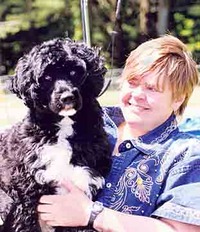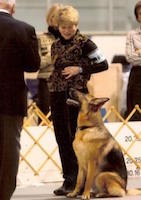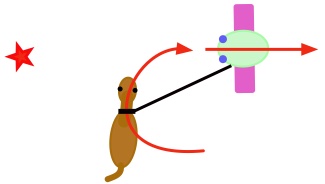Course Details
If Level 1 was kindergarten, Level 2 is all of elementary school.
Everything you and the dog learned in Level 1 now becomes more solid and more useful. You'll both be introduced to many new behaviours, with all training resting firmly on the basics from Level 1.
The "4 Ds" - distance, duration, difficulty, and distraction - will now make up a large part of your training. You can make any behaviour stronger by working on any or all of those 4 parts, and thinking about them as separate parts of every behaviour will help you remember the need to split everything you teach her into the smallest possible lessons.
Every behaviour the dog learns teaches her the actual behaviour, but there are also incidental lessons built into each Step. You AND the dog will learn to trust each other, to have faith in the performance of your partner, and to see that you can accomplish anything if you approach it in small enough steps and don't lose your cool.
In Level 2 you'll also start to see the enormous potential each behaviour has to support what the dog knows about other behaviours.
Sit and down may be different, but they each teach the dog to assume a position. Sit, Down, Zen, Focus, Lazy Leash, Go To Mat, Crate, Relax, and Handling are all behaviours that require duration - the dog must not only perform but CONTINUE to perform for a period of time.

If Madrid can learn to retrieve, your dog certainly can! We're getting a firm foundation in Level 2!
Come, Sit, Down, Lazy Leash, Go to Mat, Distance and Jump require distance - she'll have to respond when she's a specified distance away from you, or go a specified distance to perform.
If Gabriel can learn to walk on a loose leash, it shouldn't be a problem for your sensible dog, eh?
Communication encompasses several behaviours, starting with keeping the leash untangled. All the behaviours will get harder and more useful as you work through the Steps.
NOTE: Class lecture materials are as originally prepared by Sue Ailsby who has now retired from active teaching. Sue will not participate in any of the homework or discussion forums. All class forum feedback will be handled by FDSA instructor Heather Lawson.
Teaching Approach
Lectures are released twice weekly and include written and video descriptions of the exercises in a step-by-step approach. Each skill/behaviour is broken down into progressive steps. Supplemental lectures may be provided depending on the need.
Each team works at their own pace and at a level where their dog is showing understanding and confidence with the exercise for that step. Students will be provided with both general and specific written feedback, often including timestamp referrals to their videos for clarity. Students may show their work for any previous weeks as well as the current week’s exercises for ongoing feedback.
The exercises can generally be worked in smallish spaces but will also require "other larger or outdoor spaces" depending on the exercise being worked and/or for generalization purposes
 Instructor: Sue Ailsby
Instructor: Sue AilsbySusan Finlay Ailsby (she/her) has retired from active teaching for FDSA. She is a retired obedience and conformation judge. She has been "in dogs" for 54 years, having owned and trained Chihuahuas, miniature pinschers, miniature longhaired dachshunds, Australian cattle dogs, miniature schnauzers, giant schnauzers, and Portuguese...(Click here for full bio and to view Sue's self-study courses)
 Instructor: Heather Lawson
Instructor: Heather LawsonHeather Lawson (she/her) is a Certified Professional Dog Trainer - Knowledge Skills Assessed (CPDT-KSA) and also a Karen Pryor Academy Certified Training Partner (KPA-CTP), a CGN evaluator and a free-style judge. She has been training dogs and their humans for more that 20 years after deciding that...(Click here for full bio and to view Heather's upcoming courses)





